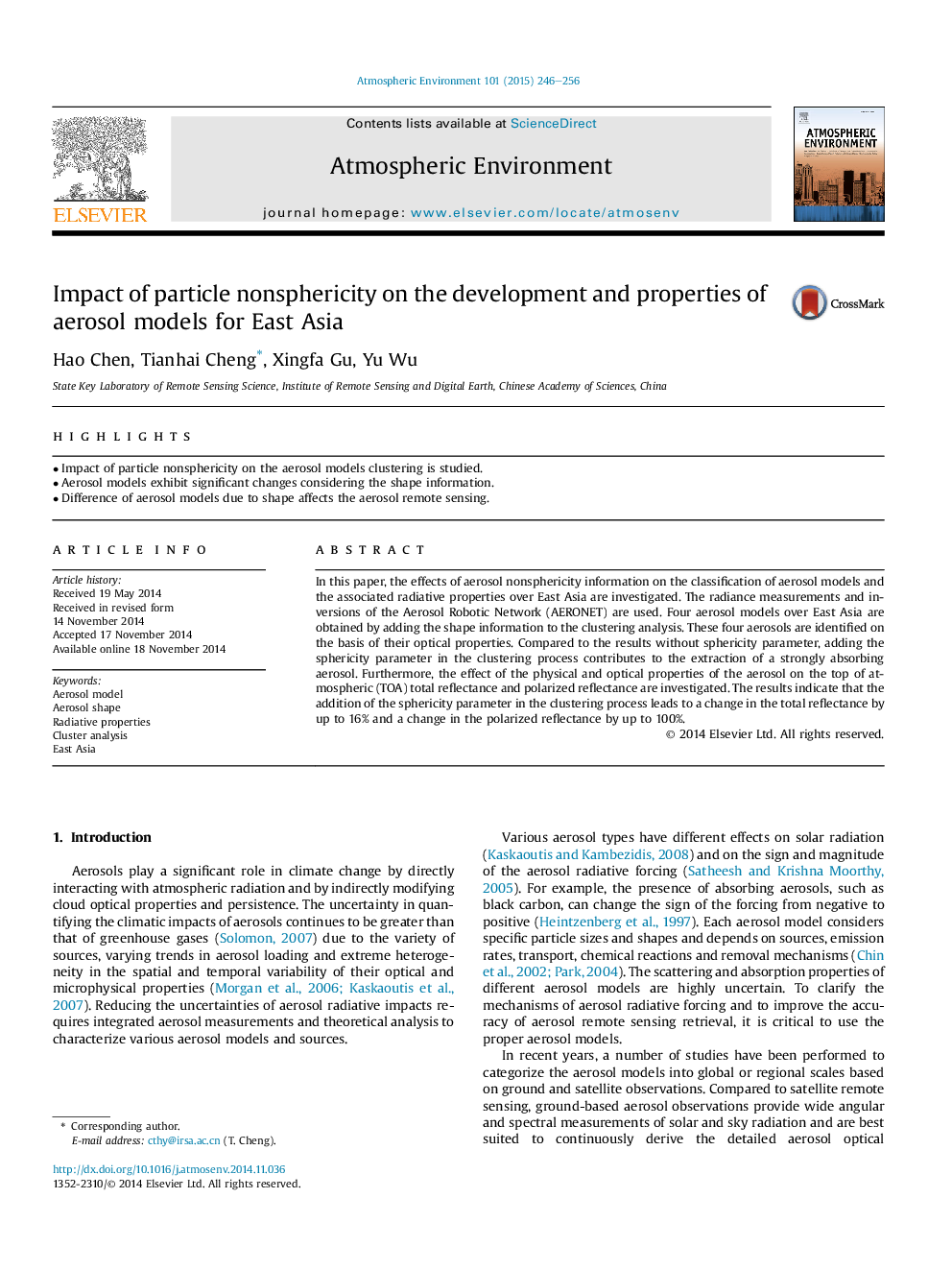| Article ID | Journal | Published Year | Pages | File Type |
|---|---|---|---|---|
| 6338630 | Atmospheric Environment | 2015 | 11 Pages |
Abstract
In this paper, the effects of aerosol nonsphericity information on the classification of aerosol models and the associated radiative properties over East Asia are investigated. The radiance measurements and inversions of the Aerosol Robotic Network (AERONET) are used. Four aerosol models over East Asia are obtained by adding the shape information to the clustering analysis. These four aerosols are identified on the basis of their optical properties. Compared to the results without sphericity parameter, adding the sphericity parameter in the clustering process contributes to the extraction of a strongly absorbing aerosol. Furthermore, the effect of the physical and optical properties of the aerosol on the top of atmospheric (TOA) total reflectance and polarized reflectance are investigated. The results indicate that the addition of the sphericity parameter in the clustering process leads to a change in the total reflectance by up to 16% and a change in the polarized reflectance by up to 100%.
Related Topics
Physical Sciences and Engineering
Earth and Planetary Sciences
Atmospheric Science
Authors
Hao Chen, Tianhai Cheng, Xingfa Gu, Yu Wu,
